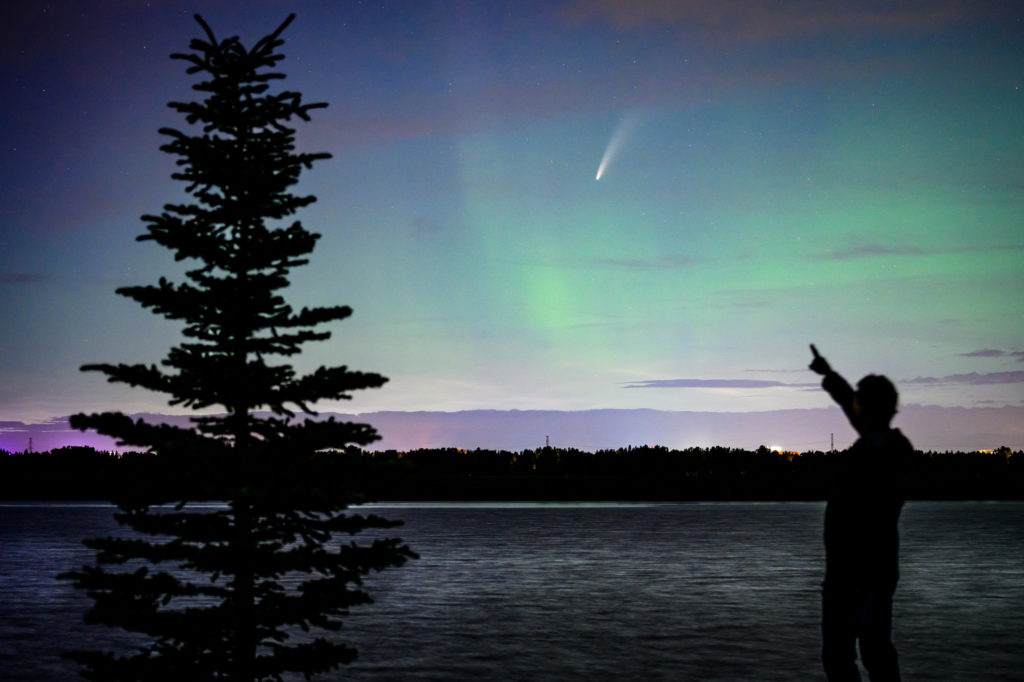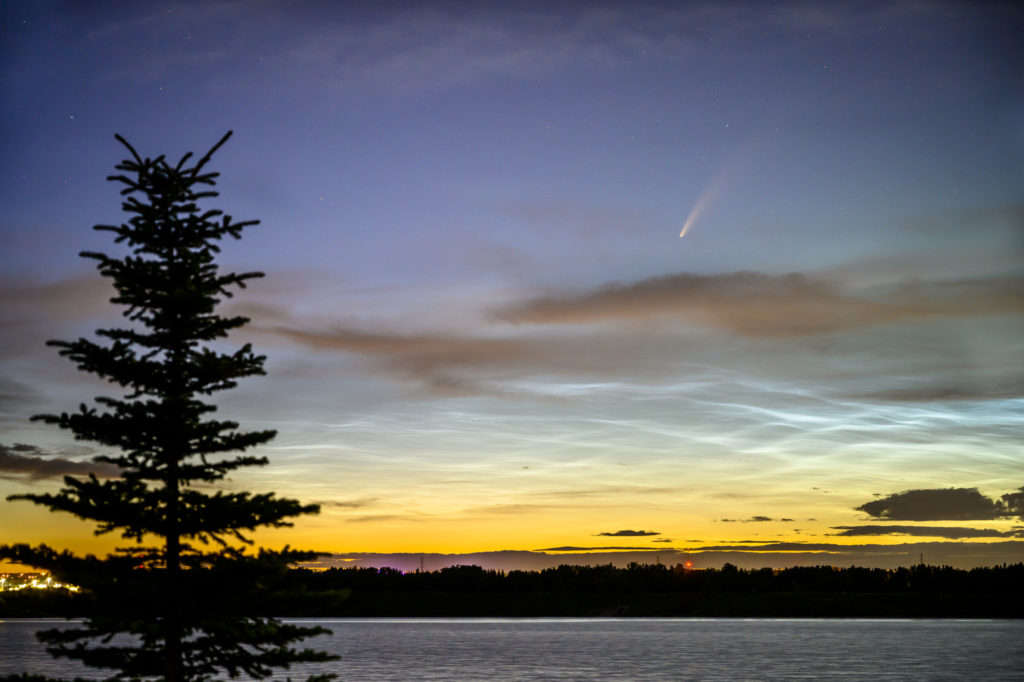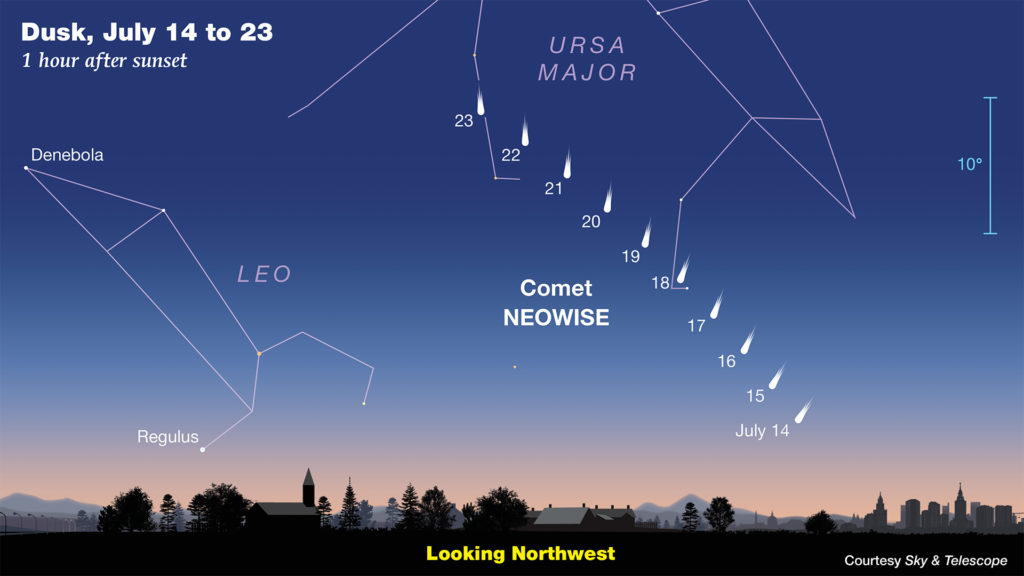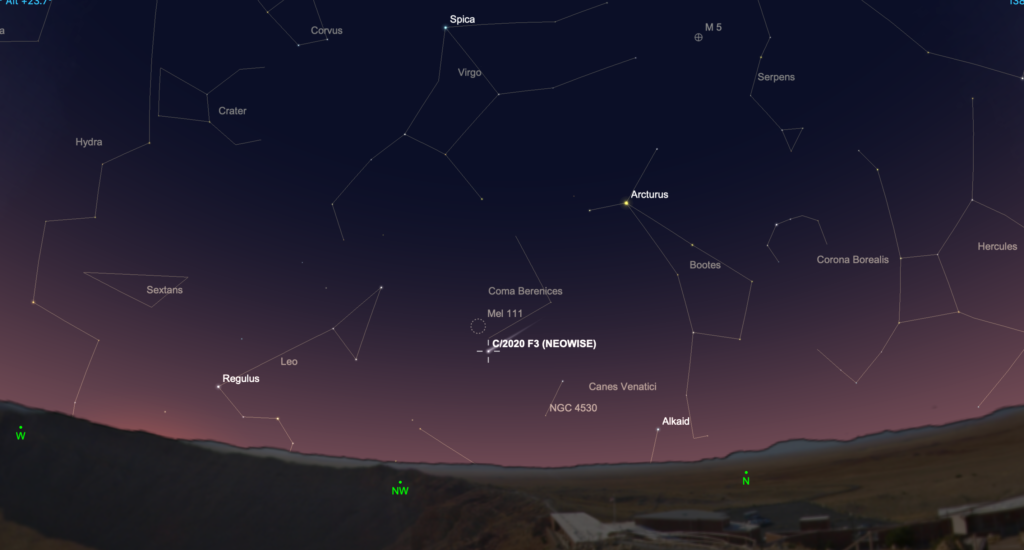
Well Comet C/2020 F3 (NEOWISE) has, unlike many recent comets, exceeded expectations and is putting on a modestly spectacular celestial display for northern-hemisphere stargazers. Earlier this month, it appeared low in the pre-dawn sky. For the rest of July NEOWISE moves into the evening sky and quickly climbs higher as it passes under the bowl of the Big Dipper. By month’s end, the comet will also become visible to southern-hemisphere observers. Under clear sky, the comet is an easy object to see with the unaided eye and surely ranks as the best comet visible north of the equator since Comet Hale-Bopp in 1996-1997.
The comet was only discovered a few months ago, on March 27, 2020 by the NEOWISE space telescope when it was already well on its way to the inner solar system some 300 million kilometers from the Sun. At 10th magnitude, the comet was already within reach of small telescopes at discovery. Since comets are notoriously unpredictable, astronomers were uncertain about how bright NEOWISE might get
Quite bright, it turns out! Estimates put the brightness as of mid July at about magnitude -1.0, plenty bright enough to be an impressive object if it were directly overhead. But since rounding the Sun on July 3, the comet has been obscured by the twilight glare for much of the past few weeks low over the northern horizon. It’s now emerged into the evening sky over the north-northwestern horizon and it continues to feature a prominent dust tail about five or six degrees long and a second much fainter blue-white ion tail visible in photographs.

From my vantage point, at 51º N latitude, the comet and its short curving tail are easily visible without optical aid, even with moderate light pollution. On July 13-14 it was one ‘fist-width’ above the north-northwestern horizon at midnight. Along with a splendid display of noctilucent clouds and intermittent auroral displays, the comet was a sight for the sore eyes of this stargazer who hasn’t seen a good one for a very long time. Still, I couldn’t help but remember that some ancient cultures beheld comets as an ominous sign of doom and pestilence. So in that sense, in 2020, Comet NEOWISE is right on time. But it’s still a beautiful sight.



The comet is near peak apparent brightness, but astronomers are uncertain when or how quickly it will begin to fade. NEOWISE is moving away from the Sun which means it’s dimming already, but it’s also moving closer to Earth and will make its closest approach on July 23, 2020 at a distance of 103 million kilometers. So it may remain a modestly impressive sight through the end of July. As the maps above show (courtesy of Sky & Telescope), the comet moves from the constellation Lynx into Ursa Major and then into Coma Berenices. Evenings are best to spot this little visitor from the outer solar system. Look north-northeast as darkness falls. If your sky is favorable, you may spot it right away without optics. A pair of binoculars gives you a better view. And a small telescope helps you see the remarkable bifurcated dust tail. This article at The Atlantic also has a nice showcase of recent images of the comet.
Do make time to go out and see Comet C/2020 F3 NEOWISE. It’s worth the modest effort it takes to see it. And it won’t be around this way for another 4,500 years.
Share This: